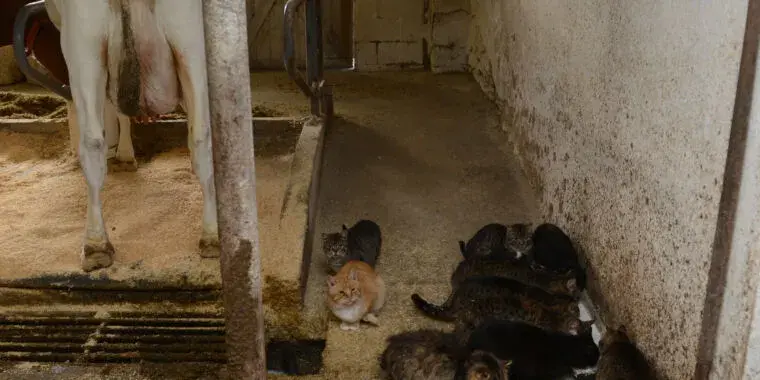Annoying, since cats shouldn’t be drinking cows milk anyway. But I guess most people with cats don’t know that. Poor cats. Died due to lack of knowledge of their owner.
The age-old myth that milk and cats go hand-in-hand has officially been debunked by veterinarians and cat experts. Regardless of how tasty milk may be to your cat, this is bad news for their stomach and digestive system. As it turns out, most cats are lactose intolerant. Is milk bad for cats?
Just like humans, some cats can’t digest lactose, a milk sugar that’s found in dairy. The only time in a cat’s life when its body actually has enough of the enzyme lactase to properly digest lactose is at birth and during its early years of life. This is so the cat can feed off of its mother’s milk. After that, less and less lactase is produced, resulting in potentially increased digestive complications.
“Even though some cats can tolerate milk and seem to enjoy it, cow’s milk just isn’t good for cats,” says Dr. Gary Richter, a veterinary health expert with Rover. “Cats don’t need dairy milk, and the potential problems outweigh the potential benefits.” Here are some other signs that your cat is trying to tell you something.
deleted by creator
🤖 I’m a bot that provides automatic summaries for articles:
Click here to see the summary
On March 16, cows on a Texas dairy farm began showing symptoms of a mysterious illness now known to be H5N1 bird flu.
They developed depressed mental states, stiff body movements, loss of coordination, circling, copious discharge from their eyes and noses, and blindness.
In a study published today in the journal Emerging Infectious Diseases, researchers in Iowa, Texas, and Kansas found that the cats had H5N1 not just in their lungs but also in their brains, hearts, and eyes.
The findings are similar to those seen in cats that were experimentally infected with H5N1, aka highly pathogenic avian influenza virus (HPAI).
On March 25, the US Department of Agriculture confirmed the presence of H5N1 in a dairy herd in Texas, marking the first time H5N1 had ever been known to cross over to cows.
Since then, the USDA has tallied infections in at least 34 herds in nine states: Texas, Kansas, Michigan, New Mexico, Idaho, Ohio, South Dakota, North Carolina, and Colorado.
Saved 76% of original text.



